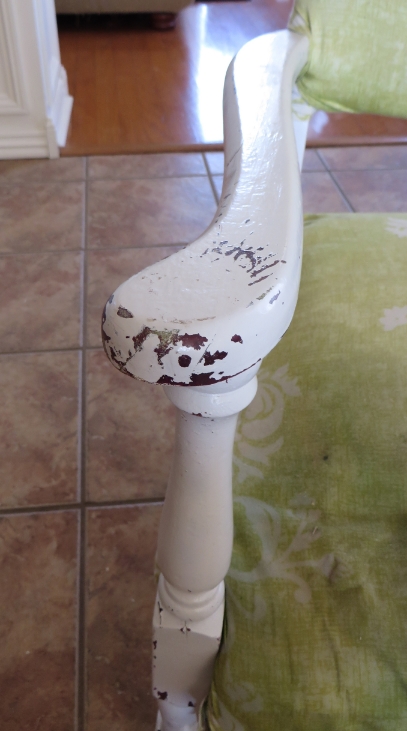Precious little metal "ice cream" chairs before and after!
I bought these pathetic little chairs at an auction last fall....
...neglected for who-knows how many years in an old outbuilding. Rusted, rotten...so sad.
Then they were neglected for months in my garage because of the "rust issue" I just had no desire to tackle. But I did...and truthfully, it is not that big of a deal (check out how to deal with rust here)....
Then they sat in my garage for ANOTHER month.
They are so darling and I knew I wanted to do something bright and fun with them...I just didn't know what. I get serious mental blocks on upholstery projects!
(I can always tell how long a "project" has been around just by the grass...in the "before" pictures my bermuda is dormant...now it is lush and green and needs to be mowed twice a week!)
So I went to the fabric store and found the brightest and most colorful fabric I could find!
Red for the frame...red is cheerful and fun and since the fabric had every color imaginable, it was perfect!
After dealing with the rust and giving them a good dose of primer (and of course the primer had to cure for a month while I mulled over colors), I sprayed the frames with red spray paint. I cut new seats and backs out of 3/8" plywood and covered them with new batting and the bright fabric .
Here is a little hint...if the "frame" where the back goes is 11", do not cut a new board 11", cover it with new fabric and batting, and expect it to fit. It won't.
The big button (almost) dead center in the flower was a fluke! The original back had a big button and I knew I wanted a button.
So this gives me the perfect opportunity to share how to make buttons for any project...chairs, pillows, headboards! Anything that has or needs a button...you can MAKE one out of any fabric!
Just buy a button kit...they have them at the fabric stores and most hobby stores. There is a template on the back for the fabric cutout and they come in all different sizes....
They are super easy to make! Just follow the directions on the back of the package!
TIP...put a dab of hot glue on the back of the front of the button before you hammer the back on and then put a dab of hot glue on the little U hook on the back of the button. A few times the back has separated from the front or the little U hook has come off the back...the glue just reinforces them a bit!
To attach the button, I measured and located the center of the board, drilled two small holes, threaded wax covered string on a large upholstery needle from back to front, through the front padding and fabric, slipped the button on the string, then threaded it back through and tied it off. Then I put a little dab of hot glue on the knot. Super simple!
I padded the back with a little batting and covered it with red fabric!
I love these little chairs...if I had somewhere to put them, I would keep them! Darling!
When I step outside my comfort zone and go with bright and colorful, I am never disappointed...maybe I should take that into consideration next time I makeover something I intend to keep!
And here is a little "upcycle" hint. I had an old outdoor chair cushion that was thrown in a pile of things I picked up at an auction. The fabric was crud but the batting inside was good. I took the fabric off and used the batting that was inside for this chair and saved the rest for future projects. Free padding!









